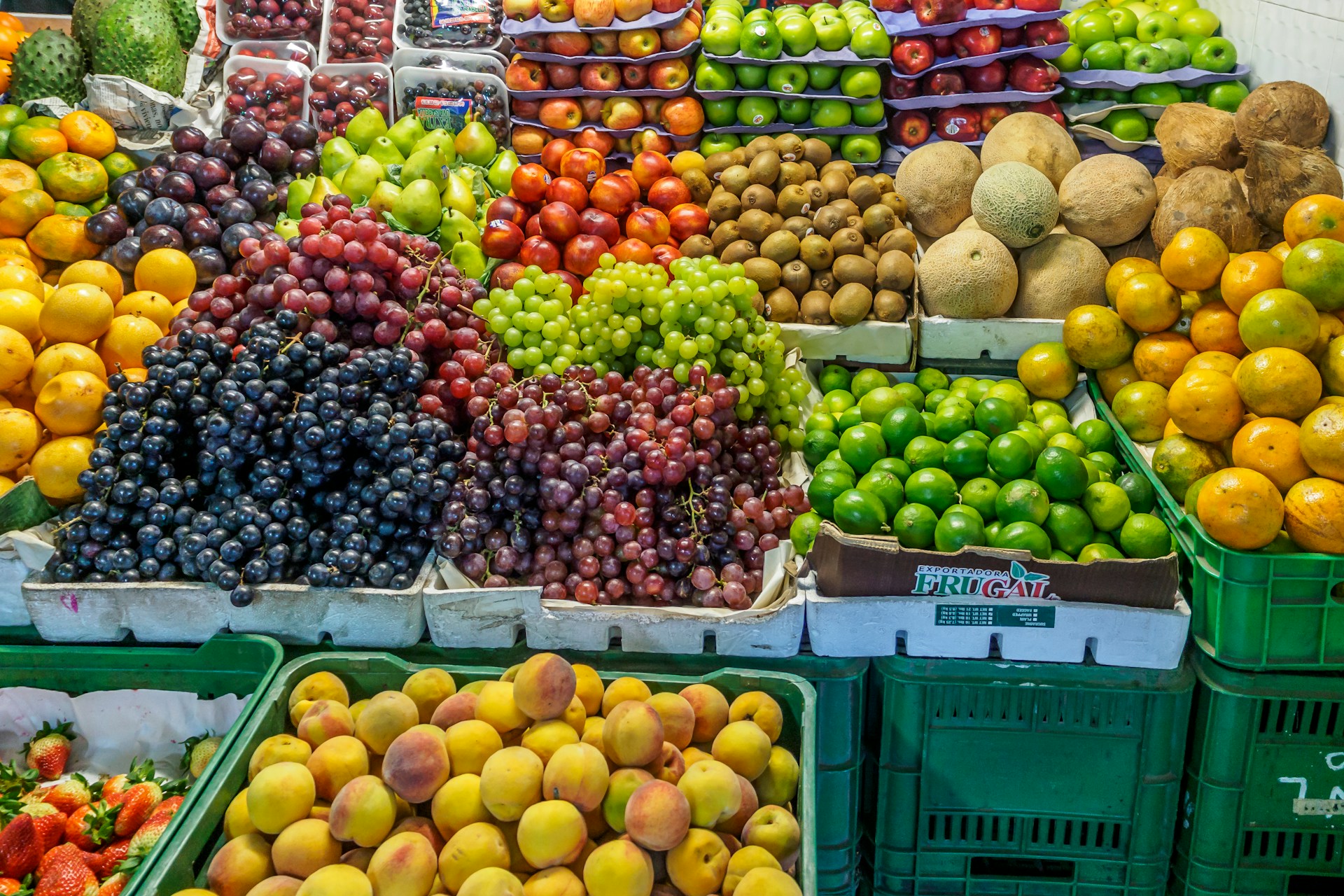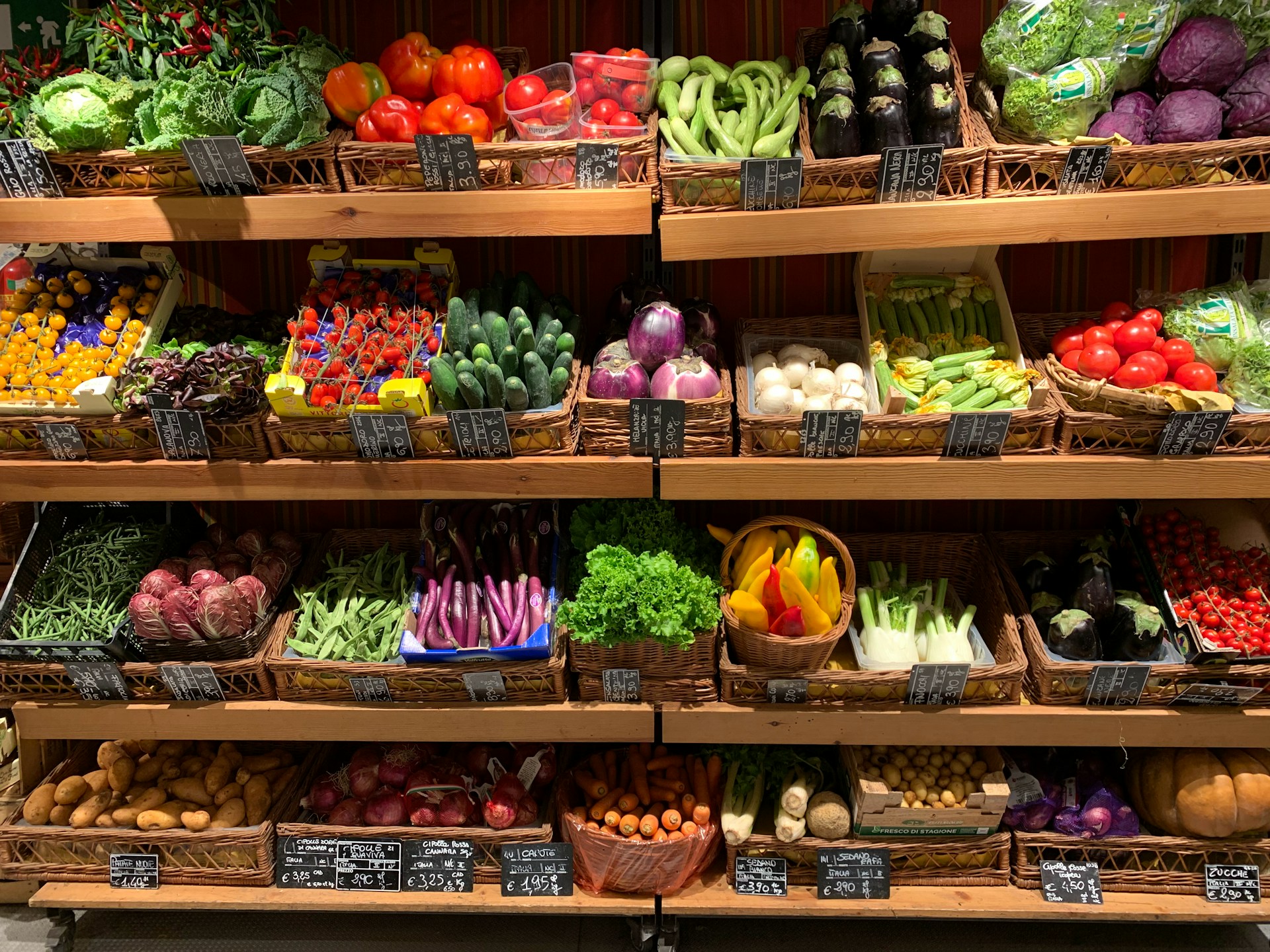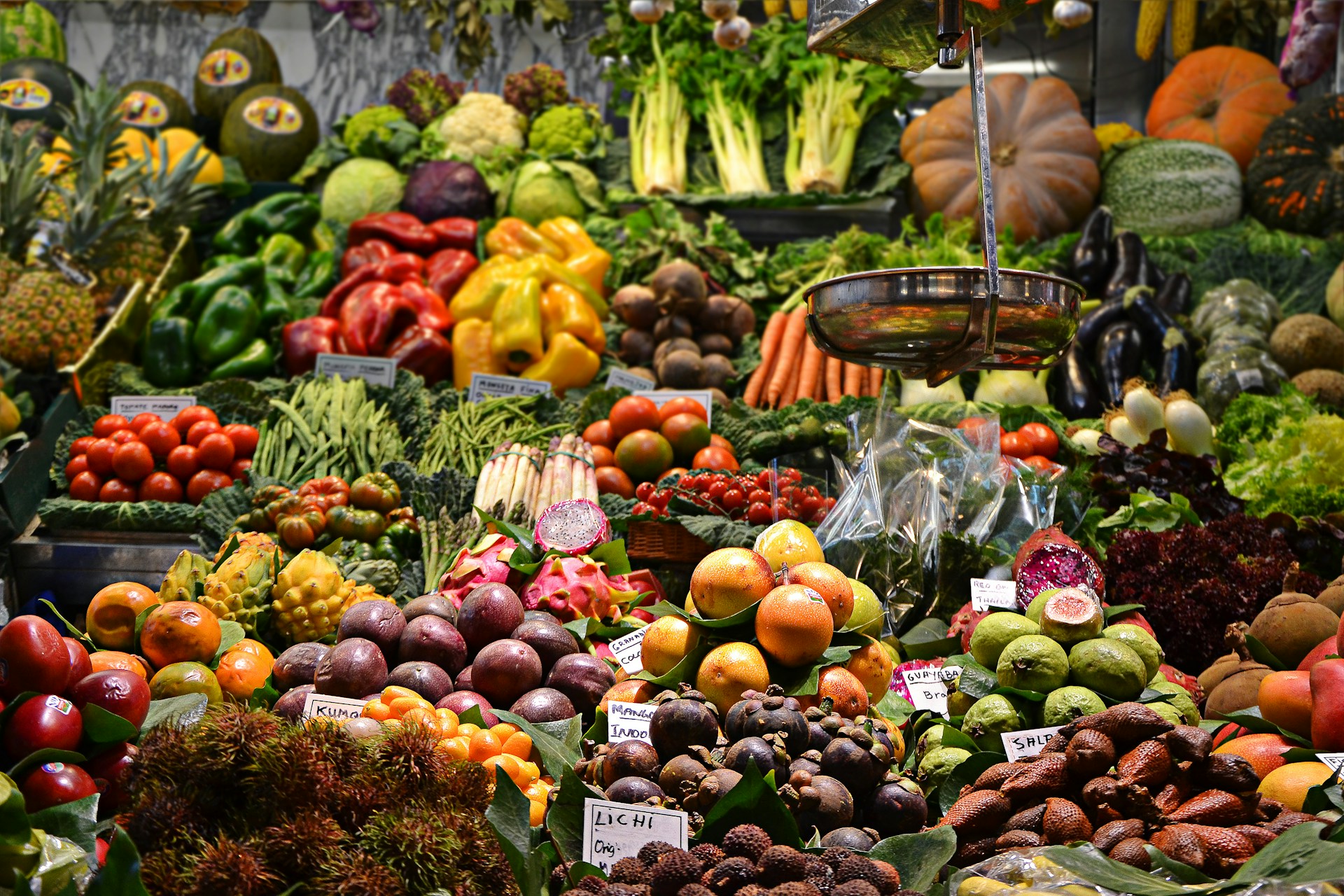The perishability of fruits and vegetables is a fundamental concern in the retail industry.
One of the key factors associated with this is the role of humidity.
By effectively managing this element, we can profoundly extend the shelf life of these sensitive items, ensuring quality, freshness, and consumer satisfaction.
This also reduces waste, benefiting both the financial performance of the retailer and the environment.
While ventilation and temperature are commonly considered, the crucial aspect of humidity regulation often remains overlooked.
In the following article, we shall dive into some practical strategies to manage humidity, providing a comprehensive guidance to retailers dealing in fresh produce.
Humidity Control Tips For Produce Retail
1. Maintain Cooler Temperature for Higher Humidity Levels
Maintaining the appropriate temperature in your produce retail store is crucial to controlling humidity levels.
Understanding the correlation between temperature and humidity is the first step towards mastering humidity control in your establishment.
> Temperature and humidity are interdependent. They work in synergy to create a conducive environment for the preservation of your produce.The association between these two factors is that a higher temperature can hold more moisture in the air, while a lower temperature holds less.
This implies that if you want to maintain a high humidity level, you must maintain a relatively cool temperature in your store.
A retail store targeting to keep 85-95% humidity should maintain a temperature of about 12-14ºC.
This temperature is not just great for humidity control; it is also an ideal condition for most fruits and vegetables.
If you oversimplify and look at just temperature, you could miss that it’s not a strict science and there needs to be balance between humidity, temperature and the fresh produce.
For example, certain types of produce like tropical fruits and vegetables require higher temperatures and levels of humidity to remain fresh.
> Identifying the specific requirements of the different types of produce you stock and adjusting the temperature and humidity accordingly can help greatly in maintaining the quality of your goods.Furthermore, it is also critical to observe seasonal changes.
Certain months may be hotter or cooler, and these changes in outdoor temperatures will impact the indoor temperature and humidity levels of your store.
You should therefore adjust your temperature and humidity control measures based on the current season.
Finding the right balance with temperature is a continuous task and it largely contributes to efficient humidity control.
Ultimately, maintaining cooler temperatures for higher humidity levels can significantly enhance the lifespan and quality of your produce, thus improving your retail store’s overall performance.
2. Use perforated plastic bags for produce
Humidity control plays a significant role in maintaining the freshness of produce in a retail setting. The method by which produce is stored can make all the difference in preserving its quality.
One particularly effective storage solution is the use of perforated plastic bags. These specialized bags are designed with a number of small holes – or perforations – which allow a controlled amount of oxygen to come into contact with the produce.
This functionality holds significance as oxygen can facilitate the ripening process of certain fruits and vegetables, so the bags allow for the regulation of this process and in turn, enhance the produce’s shelf life.
Utilizing perforated bags is a practical, cost-effective way to maintain ideal humidity conditions within the bag and prevent the build-up of excess moisture – a major factor contributing to spoilage.
Perforated bags ensure that there’s just enough exchange of air to maintain the right moisture levels.
At the same time, it’s important to recognize that not all produce is best stored in the same way. Different kinds of produce require different degrees of moisture and air circulation to stay fresh.
Nevertheless, perforated bags are quite versatile and can be used for a wide range of produce including leafy greens, bell peppers, tomatoes and cucumbers to name a few.
These bags work their magic in the refrigerator, but they can also be used for produce displayed on the shop floor. Coupled with correct temperature settings, the bags can significantly extend the display life of fruits and vegetables.
As a retailer, it is also important to educate your customers about the benefits of perforated bags. Customers who understand how their produce is being cared for are more likely to continue shopping with you.
Display signs or labels that explain the use of perforated bags can be an effective marketing tool and can help customers understand why your produce is of better quality.
You can also offer these bags for sale, or even provide them complimentary with purchase, as a value-added strategy to show you are committed to providing the freshest, highest quality produce possible.
Implementing the use of these bags in your retail setting is a simple step that can make a reinforced impact on the freshness of your produce, ultimately leading to reduced waste and improved customer satisfaction.
Whether used on the shop floor or recommended for home use, perforated plastic bags can play a pivotal role in effective humidity control for your retail produce business.
Thus, investing in perforated plastic bags and incorporating them into your storage and display practices is a proactive move towards better humidity management that benefits both your business and customers alike.
3. Regularly Check and Adjust Humidity Settings
In the realm of produce retail, maintaining the optimum humidity level plays a significant role in preserving the quality of fresh products.
As such, a crucial task is to regularly check and adjust humidity settings in the storage area, depending on the specific requirements of the stored produce.
This monitoring and fine-tuning process ensures the longevity and freshness of the produce, preventing premature spoilage and waste.
Understanding the ideal humidity levels for different fruits and vegetables is fundamental in achieving optimal results.
Being equipped with a humidity gauge or a hygrometer provides an accurate reading, thus helping you make informed decisions about necessary adjustments.
Incorporating automatic humidity control devices can also reduce the manual effort and increase the efficacy of maintaining the proper humidity levels.
These devices can automatically adjust the humidity according to pre-set levels, ensuring that the produce is always stored under favorable conditions.
Besides the humidity level, temperature settings also need to be frequently checked and adjusted, as these two are interconnected and influence one another.
Too high or too low temperatures can negatively impact the humidity, thus affecting the produce’s overall quality and shelf life.
Mindful adjustment of both levels can help create a balanced environment that is appropriate for the type of produce being stored.
Regular recording of humidity and temperature readings allows for longitudinal patterns and trends to be recognized and adjustments to be made ahead of time.
This proactive approach can help avert potential produce loss and optimize the quality of the product being offered to the customers.
Moreover, maintaining a consistent check on these settings is even more critical during extreme weather conditions, when humidity levels can fluctely rapidly, thus requiring immediate adjustments.
It is also worth emphasizing that regular cleaning and maintenance of humidity and temperature control devices are equally important to ensure their efficient functioning.
Maintaining a system of regularly checking and adjusting these humidity settings, thereby, contributes significantly to maintaining the overall health and longevity of the produce, and in turn, to the satisfaction and trust of your customers.
4. Store Similar Produce Together to Avoid Moisture Loss
Proper organization of produce in the storage area is one of the key aspects in maintaining a suitable humidity level.
Storing similar produce together is a method that can greatly aid in preserving the moisture content of vegetables and fruits.
For instance, cold-tolerant vegetables such as cabbage and beets thrive in high humidity levels and should be stored together.
On the other hand, produce like pumpkins and winter squashes prefer a cool and dry environment and should be stored separately.
Compatibility should also be considered while storing different kinds of produce together.
Produce that release a significant amount of ethylene gas, a natural ripening agent, should not be stored next to ethylene-sensitive produce as it can speed up their ripening process and cause spoilage.
Examples of high ethylene producers are apples, bananas, and tomatoes whereas lettuce and broccoli are some of the items that are sensitive to this gas.
By grouping similar produce and taking into account their ethylene sensitivity, moisture loss can be effectively managed.
This method of organization not only aids in reducing moisture loss but also enhances the shelf life of the produce.
Organizing produce based on their similar requirements can also mitigate the risks associated with cross-contamination and fungal infections.
A well-ordered storage area can facilitate better air circulation around the produce, which can evenly distribute humidity and temperature.
Remember, too much moisture can cause produce to rot, while too little can lead to dehydration and wilting.
It’s crucial to find a balance, and storing similar produce together can greatly assist in this endeavor.
Each type of produce has a unique set of storage needs, hence it is important to understand these requirements to maximize their lifespan and maintain optimal quality.
Through strategic placement of produce, retailers can significantly improve their humidity control measures and consequently, reduce wastage.
Therefore, storing similar produce together is a practical and efficient approach to managing humidity in retail produce storage areas.
It aids in preserving the taste, color, and nutritional content of the produce, thereby proving beneficial for both retailers and consumers.
5. Invest in Reliable Humidification and Dehumidification Systems
One key aspect in preserving the freshness of produce in a retail setting is the use of reliable humidification and dehumidification systems.
These systems are not just accessories but necessary investments to maintain optimum humidity levels.
Often the use of general air conditioning or heating systems is not sufficient to control the humidity levels in a produce storage or display area.
Investing in specific humidification and dehumidification systems designed to control humidity in retail produce environments can dramatically improve the freshness, aesthetic appeal and lifespan of your produce.
This is essential as the quality and freshness of produce is a key selling point for consumers.
These systems work by adding moisture to the air when the humidity levels are too low or removing excess moisture when the levels are too high.
They are ideally designed to maintain an even level of humidity that is neither too dry nor too damp.
Keep in mind that different types of produce require different humidity levels, and your system should be flexible enough to cater to these needs.
For example, leafy greens require high humidity to retain their crispness and color, while apples and pears prefer a cooler, slightly drier environment.
Therefore, investing in reliable and flexible systems can ensure your produce remains in the best condition possible.
While upfront costs may seem high, these systems eventually pay for themselves through reduced waste and increased sales, as fresher, more appealing produce attracts more customers.
Furthermore, efficient humidity control can prevent the formation of mold and bacteria, enhancing food safety.
It is vital to regularly maintain and service these systems to ensure they are working effectively and efficiently.
While there is an additional cost for regular servicing, this can prevent larger, more costly repairs or replacements in the future.
Ideally, it should be in your business priority to consider these factors and make the right decision to invest in a reliable humidification and dehumidification system.
In this way, you can assure the consumer of the quality and freshness of your produce, thereby strengthening your retail reputation in the market.
The Bottom Line
Keeping your produce fresh requires the optimal balance of temperature, humidity, and strategic storage methods.
Ensuring a cool environment will encourage higher humidity levels, while employing perforated plastic bags can refine moisture content.
Regular checks and adjustments of humidity settings can further help maintain the ideal setting.
Grouping similar produce will prevent unnecessary moisture loss and investing in dependable humidification and dehumidification systems can offer ultimate control over atmospheric conditions for storage.
By adopting these practices, the freshness and longevity of your produce can indeed be effectively managed.




